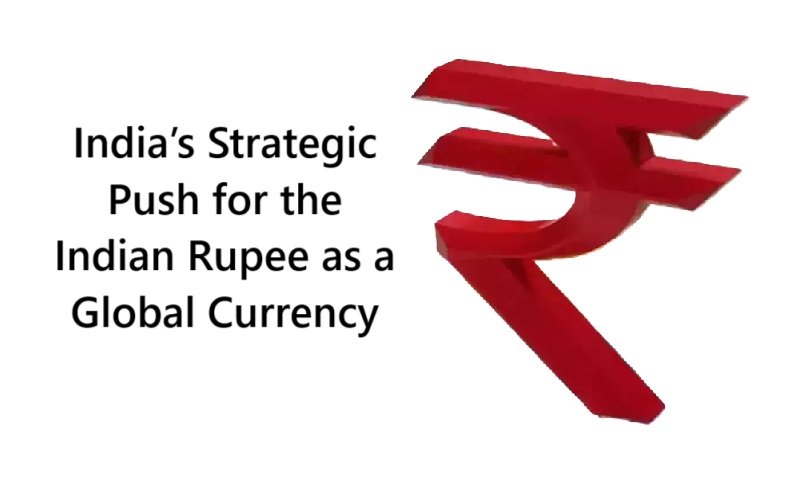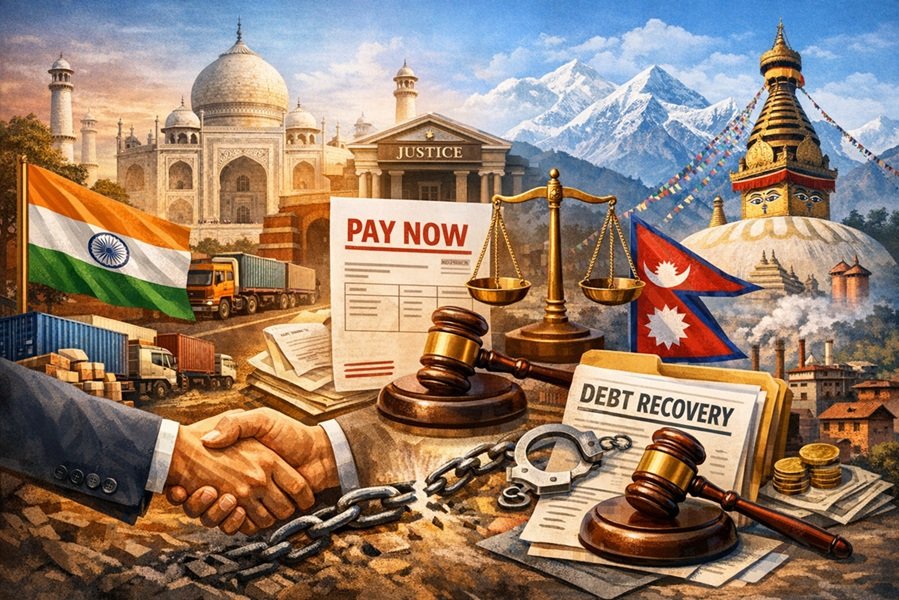
As of March 23, 2025, India’s economic ambitions are taking shape through a multi-pronged strategy that includes bolstering its gold reserves, utilizing innovative financial mechanisms like Nostro and Vostro accounts, and positioning the Indian Rupee (INR) as a potential global currency. These efforts are unfolding against the backdrop of discussions within the BRICS bloc (Brazil, Russia, India, China, and South Africa) about a possible alternative reserve currency to challenge the dominance of the U.S. dollar. This article explores India’s motivations, actions, and the broader geopolitical and economic implications of these developments, providing a detailed and in-depth analysis.
India’s Gold Reserve Expansion: A Strategic Hedge
India has been steadily increasing its gold reserves, a move driven by the Reserve Bank of India (RBI) to diversify its foreign exchange portfolio and safeguard against global economic volatility. By the end of 2024, India’s gold reserves reached 876.20 tonnes, up from 853.63 tonnes in the third quarter, marking a significant rise from 794.64 tonnes at the end of March 2023. This accumulation reflects a deliberate policy shift that began gaining momentum in 2022, with the RBI emerging as one of the world’s top gold buyers among central banks.
The motivation behind this gold rush is multifaceted. First, gold serves as a hedge against inflation and currency depreciation, particularly as the U.S. dollar’s reliability has come under scrutiny amid geopolitical tensions, such as the Russia-Ukraine conflict that began in 2022. The RBI’s Governor, Shaktikanta Das, has alluded to this uncertainty as a key driver, emphasizing the need to diversify reserves beyond traditional currencies. Second, India’s repatriation of over 214 tonnes of gold from foreign vaults (notably the Bank of England) since September 2022 underscores a desire for greater sovereignty over its assets, reducing reliance on foreign custodians amid fears of sanctions or asset freezes, as seen with Russia.
In 2024 alone, the RBI added 72.6 tonnes of gold, outpacing the 16 tonnes added in 2023 and 33 tonnes in 2022. This aggressive accumulation has elevated gold’s share in India’s foreign exchange reserves to 10.2% by November 2024, up from 7.8% a year earlier. This trend aligns India with other emerging economies seeking to mitigate risks associated with dollar-dominated reserves, particularly as real interest rates on U.S. government bonds have turned negative due to inflation.
India’s gold strategy also reflects its cultural affinity for the metal, which plays a significant role in its economy as a store of value and a driver of demand during festive seasons. However, the RBI’s purchases signal a deeper intent: to bolster economic resilience and enhance the credibility of the INR in international markets.
Nostro and Vostro Accounts: Facilitating Rupee-Based Trade
Since July 2022, India has leveraged Nostro and Vostro accounts to promote the internationalization of the INR, a pivotal step in reducing dependence on the U.S. dollar for international trade. A Nostro account is held by an Indian bank in a foreign country in that country’s currency (e.g., an Indian bank’s dollar account in the U.S.), while a Vostro account is a foreign bank’s account in India denominated in INR. The RBI introduced the Special Rupee Vostro Account (SRVA) mechanism to enable trade settlements in INR, a response to the dollar shortages faced by India and its trading partners following the Russia-Ukraine war and subsequent Western sanctions on Russia.
This mechanism allows Indian importers to pay in INR, which is credited to the Vostro accounts of correspondent banks in partner countries, while exporters receive payments from these accounts. By December 2024, banks from 22 countries—including Russia, Sri Lanka, Mauritius, Bangladesh, and the United Kingdom—had opened SRVAs with Indian banks. Talks are ongoing with nations like Tajikistan, Cuba, Luxembourg, and Sudan to expand this network further. Notably, India pioneered its first INR-based trade settlement with Russia in December 2022, saving an estimated $30 billion in dollar outflows on crude oil imports.
The advantages of this system are clear. It eliminates intermediary currency conversion costs, reduces India’s current account deficit (CAD), and mitigates the need for large dollar reserves. For instance, India’s purchase of discounted Russian oil in INR since 2022 has not only strengthened bilateral ties but also allowed India to process and resell refined products to Europe, boosting its foreign exchange reserves. Additionally, agreements like the INR-dirham payment system with the UAE and Saudi Arabia, initiated in 2023, highlight the growing acceptance of rupee-based trade.
However, challenges remain. Russia, for example, has accumulated surplus rupees in its Vostro accounts, prompting calls for alternative uses or conversions (e.g., into Brazilian reais or South African rand). This underscores the need for broader adoption and liquidity of the INR to make it a viable global currency.
The BRICS Currency Debate: A Collective Challenge to Dollar Dominance
The BRICS bloc has been a vocal proponent of “de-dollarization,” a concept that gained traction after the U.S. imposed sanctions on Russia in 2022, cutting it off from the SWIFT financial system. At the 2022 BRICS Summit, Russian President Vladimir Putin announced plans for a new global reserve currency based on a basket of BRICS currencies, tentatively called the “Unit,” potentially backed by gold. The idea resurfaced at the 2024 Kazan Summit, where Putin showcased a prototype BRICS banknote, though he softened his rhetoric, emphasizing alternative payment systems over outright dollar replacement.
India’s stance within BRICS is nuanced. While it supports the use of local currencies for intra-BRICS trade—offering flexibility to settle surpluses across member states—India has distanced itself from a binding common currency. Former RBI Governor Shaktikanta Das clarified in December 2024 that India’s efforts are about “de-risking” trade, not de-dollarization per se. India’s caution stems from geopolitical realities: the dominance of the Chinese yuan in any BRICS currency basket could undermine India’s interests, given ongoing tensions with China.
Nevertheless, the BRICS framework aligns with India’s broader goal of reducing dollar dependency. A notional BRICS currency could enhance the INR’s global profile if it gains traction, though its success hinges on economic coordination among成员 nations with divergent interests and the yuan’s outsized influence.
The Indian Rupee as a Global Currency: Ambitions and Hurdles
India’s aspiration to elevate the INR to a global reserve currency is rooted in its economic growth—projected at 6.0–6.8% for FY24—and its status as the world’s fifth-largest economy. The RBI’s 2022 initiatives, coupled with gold reserve expansion, signal a concerted effort to achieve this. Internationalization would allow the INR to be freely traded, held as a reserve by other nations, and used for cross-border transactions, reducing India’s vulnerability to dollar volatility and imported inflation (e.g., from oil imports).
Progress Made:
- Trade Settlements: Beyond Russia, countries like Iran, Sri Lanka, and Nepal have embraced INR-based transactions. Sri Lanka designated the INR as a foreign currency in 2022, while Singapore and Malaysia accept it to some extent.
- Economic Stability: India’s forex reserves, including gold, covered 11.2 months of imports by October 2024, bolstering confidence in the INR.
- Policy Reforms: The RBI’s regulatory sandbox initiatives since 2022 aim to innovate cross-border payment systems, enhancing INR usability.
Challenges Ahead:
- Limited Global Share: India’s share of global commercial services exports was just 4.4% in 2022, limiting demand for INR reserves abroad.
- Capital Account Convertibility: Full convertibility, a prerequisite for reserve currency status, remains elusive. The 1997 and 2006 Tarapore Committee recommendations (e.g., fiscal deficit below 3.5% of GDP, inflation at 3–5%) are yet to be fully met.
- Dollar Dominance: Despite de-dollarization efforts, 86% of India’s trade is invoiced in dollars, far exceeding its trade with the U.S. (5% of imports, 15% of exports).
- Geopolitical Risks: India’s reluctance to fully align with BRICS de-dollarization plans reflects concerns over China’s influence and the U.S.’s retaliatory threats, such as President Donald Trump’s January 2025 warning of 100% tariffs on BRICS nations pursuing alternatives.
Critical Analysis: Beyond the Establishment Narrative
While India’s gold accumulation and INR internationalization are framed as prudent economic strategies, a critical lens reveals underlying tensions. The RBI’s gold purchases, while stabilizing, divert resources from productive investments, reflecting a conservative rather than transformative approach. The Vostro system, though innovative, struggles with scalability—Russia’s rupee surplus highlights the INR’s limited convertibility outside bilateral contexts.
Moreover, the BRICS currency proposal risks being more symbolic than practical. The euro’s success as a reserve currency relied on geographic proximity and economic integration, conditions absent in the dispersed BRICS bloc. India’s cautious stance—favoring flexibility over commitment—suggests skepticism about its feasibility and a preference for unilateral INR promotion over collective action dominated by China.
Finally, the U.S. dollar’s entrenched position, backed by the world’s largest economy and liquid financial markets, poses a formidable barrier. India’s push for INR globalization may yield incremental gains (e.g., with sanctioned nations like Russia or Iran), but achieving reserve currency status requires decades of structural reforms, global trust, and a shift in international power dynamics.
Conclusion: A Long Road Ahead
India’s strategy of increasing gold reserves, leveraging Nostro and Vostro accounts, and engaging with BRICS currency talks reflects a bold vision to enhance its economic sovereignty and elevate the INR’s global standing. Since 2022, these efforts have gained momentum, driven by geopolitical shifts and a desire to mitigate dollar dependency. Yet, the path to making the INR a global currency is fraught with challenges—economic, political, and structural—that demand sustained reforms and international cooperation.
As of March 23, 2025, India stands at a crossroads. Its gold reserves provide a foundation of stability, its trade mechanisms offer a blueprint for de-risking, and its BRICS engagement signals ambition. However, true success hinges on overcoming domestic limitations and navigating a multipolar world where the dollar’s dominance, though contested, remains resilient. For now, India’s journey is one of strategic patience, balancing aspiration with pragmatism in an evolving global landscape.







